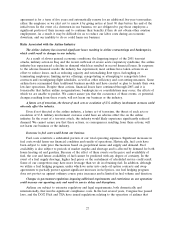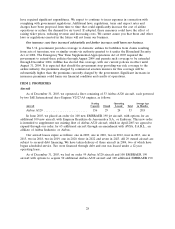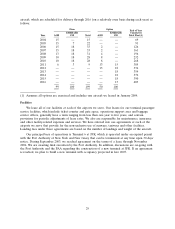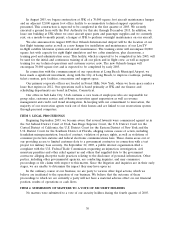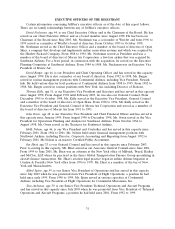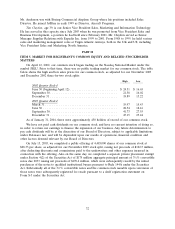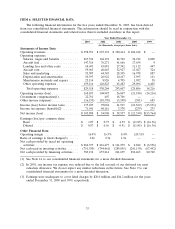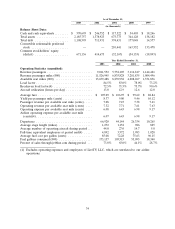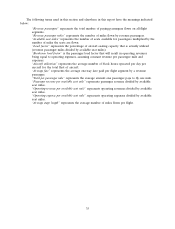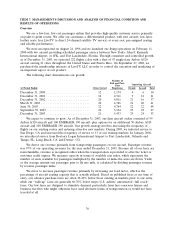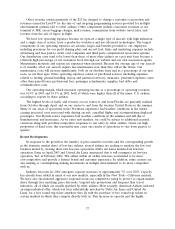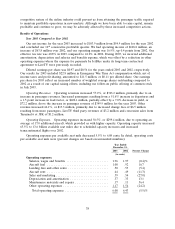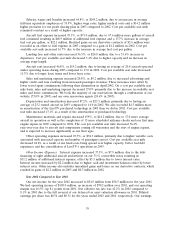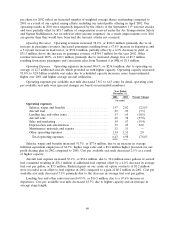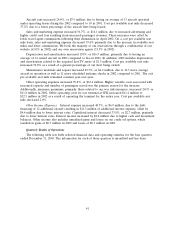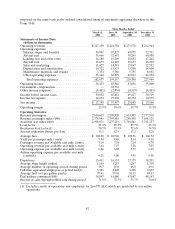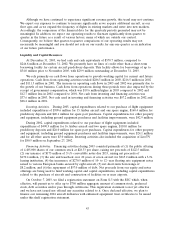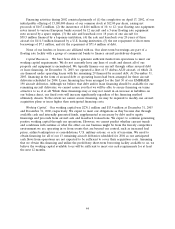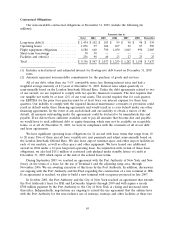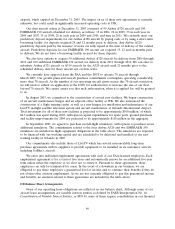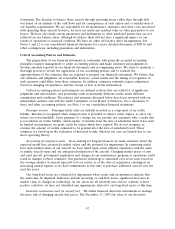JetBlue Airlines 2003 Annual Report Download - page 40
Download and view the complete annual report
Please find page 40 of the 2003 JetBlue Airlines annual report below. You can navigate through the pages in the report by either clicking on the pages listed below, or by using the keyword search tool below to find specific information within the annual report.Other revenue consists primarily of the $25 fee charged to change a customer’s reservation and
revenues earned by LiveTV for the sale of and on-going programming services provided for in-flight
entertainment systems sold to other airlines. Other components include concession revenues at our
terminal at JFK, excess baggage charges, mail revenue, commissions from website travel sales, and
revenue from the sale of liquor in-flight.
We have low operating expenses because we operate a single type of aircraft, with high utilization
and a single class of service, have a productive workforce and use advanced technologies. The largest
components of our operating expenses are salaries, wages and benefits provided to our employees,
including provisions for our profit sharing plan, and aircraft fuel. Sales and marketing expenses include
advertising and fees paid to credit card companies and third-party computerized reservation systems.
Our distribution costs tend to be lower than those of most other airlines on a per unit basis because a
relatively high percentage of our customers book through our website and our own reservation agents.
Maintenance materials and repairs are expensed when incurred. Because the average age of our aircraft
is 21 months, all of our aircraft require less maintenance now than they will in the future. Our
maintenance costs will increase significantly, both on an absolute basis and as a percentage of our unit
costs, as our fleet ages. Other operating expenses consist of purchased services (including expenses
related to fueling, ground handling, skycap and janitorial services), insurance, personnel expenses, taxes
other than payroll taxes, professional fees, passenger refreshments, supplies, bad debts and
communication costs.
Our operating margin, which measures operating income as a percentage of operating revenues,
was 16.9% in 2003 and 16.5% in 2002, both of which were higher than all of the major U.S. airlines,
according to reports by these airlines.
The highest levels of traffic and revenue on our routes to and from Florida are generally realized
from October through April, and on our routes to and from the western United States in the summer.
Many of our areas of operations in the Northeast experience bad weather conditions in the winter,
causing increased costs associated with deicing aircraft, cancelled flights and accommodating displaced
passengers. Our Florida routes experience bad weather conditions in the summer and fall due to
thunderstorms and hurricanes. As we enter new markets, we could be subject to additional seasonal
variations along with potential competitive responses to our entry by other airlines. Given our high
proportion of fixed costs, this seasonality may cause our results of operations to vary from quarter to
quarter.
Recent Developments
In response to the growth in the number of price-sensitive travelers and the corresponding growth
in the domestic market share of low-fare airlines, several airlines are seeking to emulate the low-cost
business model by creating their own low-fare operations. Delta Air Lines launched its low-fare
operation, Song, in April 2003 and United Air Lines announced that it will commence its low-fare
operation, Ted, in February 2004. The airline within an airline structure is intended to be more
cost-competitive and provide a distinct brand and customer experience. In addition, some carriers are
also making or contemplating making investments in in-flight entertainment to be more competitive
with us.
Industry forecasts for 2004 anticipate capacity increases of approximately 7% over 2003. Capacity
has already been added in many of our new markets, especially in the New York—California markets.
We have also encountered aggressive responses from our competitors trying to protect or regain market
share through fare matching, price discounts, targeted sale promotions and frequent flyer travel
initiatives, all of which are usually matched by other airlines. Most recently, American Airlines initiated
an unprecedented offer, which was later substantially matched by Delta Air Lines and United Air
Lines, for a free round trip ticket anywhere they fly with the purchase of two round trip tickets in
certain markets in which they compete directly with us. This increase in capacity and the highly
37


